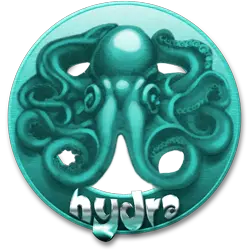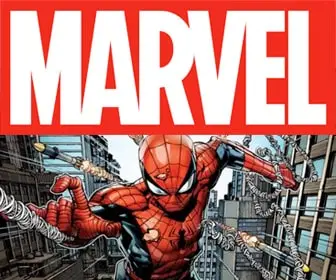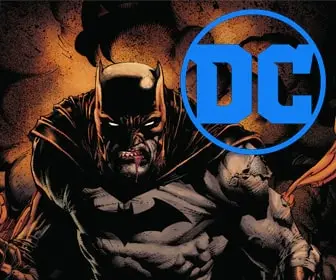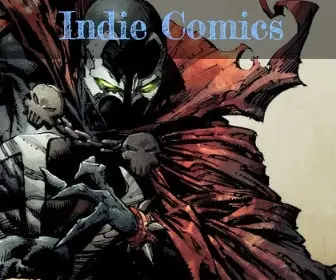
The Rise and Fall of Wizard Magazine
Welcome to the fascinating world of Wizard Magazine, a key player in the comic book industry for over two decades. Launched in the early 90s, Wizard quickly became more than just a magazine; it was a vital guide that comic book enthusiasts eagerly awaited each month. Imagine a magazine packed with exciting features, from detailed price guides for collectors to exclusive interviews with top comic book artists and writers.
Wizard was not just about comics; it embraced the entire spectrum of pop culture, covering everything from the latest in superhero movies to fantasy and science fiction. It had a special way of connecting with fans, offering them a behind-the-scenes look at their favorite comic book heroes and upcoming trends that would shape the industry. This magazine was where many fans turned to get the scoop on what was new and hot in the world of comics.
As we dive deeper into the story of Wizard Magazine, we’ll explore how it started, what made it so popular, and why it eventually had to close its doors. Join us on this journey to discover the lasting impact Wizard has left on the comic book world and why it’s still remembered fondly by fans today.
History of Wizard Magazine
Wizard Magazine began its journey in the early 1990s, during a time when comic books were booming in popularity. Created by Gareb Shamus, a young entrepreneur who saw a growing demand for a dedicated comic book magazine, Wizard hit the stands and immediately caught the attention of fans everywhere. It was different from other magazines because it focused not just on comic book stories, but also on the collectible nature of comics, providing price guides that helped collectors understand the value of their treasures.
As the years passed, Wizard Magazine grew and changed to keep up with its readers’ interests. It started featuring more than just price guides; it included interviews with famous comic book creators, previews of upcoming comics, and even news about movies and TV shows based on comics. Wizard knew that its readers loved all things related to pop culture, so it expanded its content to include everything from action figures to video games.
Special editions and iconic covers became a hallmark of Wizard. Some issues were so popular that they became collector’s items themselves. Fans would rush to the stores to grab the latest issue, not just to read the articles, but to admire and collect the creative covers. These covers often featured artwork by renowned comic book artists, making each issue a piece of art.
Wizard’s evolution mirrored the changing landscape of the comic book industry. As comics became more mainstream, thanks to blockbuster movies and TV adaptations, Wizard helped guide fans through these exciting times. It wasn’t just a magazine; it was a community hub for people who shared a love for comics and pop culture. Through its pages, Wizard Magazine played a pivotal role in shaping the comic book culture of the 1990s and early 2000s.
Features and Segments
Wizard Magazine was like a treasure chest for comic book fans, packed with various features and segments that made each issue a new adventure. One of the magazine’s most beloved sections was the price guide. This was not just a list of numbers; it was a comprehensive guide that helped collectors understand what their comic books were worth. Whether you were just starting your collection or looking for that rare gem to complete your set, Wizard’s price guide was an essential tool.
Interviews with comic book artists and writers were another exciting feature. These interviews gave readers an insider’s look at the creative process behind their favorite comics. Fans could learn about upcoming stories, get hints about future plots, or just enjoy stories from behind the scenes of the comic book world. It was like having a conversation with the creators themselves.
Top ten lists were also a big hit. These lists ranked everything from the most powerful superheroes to the best-selling comic books of the month. They sparked debates among fans and were a fun way for readers to see if their favorites made the list.
Wizard also included special editions and themed issues that focused on major events in the comic book world, such as the release of a new blockbuster movie or the debut of a new series. These special issues often had unique, eye-catching covers and exclusive content that made them must-haves for collectors.
Each issue of Wizard was more than just a magazine; it was a guide to the ever-changing world of comics and pop culture. Whether you were into superheroes, fantasy, or science fiction, Wizard had something to catch your interest and keep you coming back for more.
Impact on the Comic Book Industry
Wizard Magazine didn’t just report on comic book trends; it helped create them. By spotlighting certain comics and characters, Wizard influenced which comics became popular. If a comic was featured on the cover of Wizard or made it to one of their top ten lists, it could see a significant boost in sales. This power made Wizard an important player in the comic book industry.
The magazine also played a big role in bringing comic book culture into the mainstream. Before the internet was widely used, Wizard was one of the few places where fans could get information about upcoming movies, TV shows, and merchandise related to their favorite comics. It helped connect fans with the broader world of pop culture, making comic book characters familiar to people who might not even read comics.
Wizard’s coverage went beyond just the big names like Batman and Spider-Man. It also highlighted lesser-known artists and writers, giving them a platform to reach a wider audience. This support helped launch the careers of many talented creators who might have otherwise gone unnoticed.
Furthermore, Wizard’s annual conventions, known as Wizard World, brought fans and creators together in a celebration of comics and pop culture. These events were more than just trade shows; they were vibrant, exciting gatherings where fans could meet their heroes, discover new comics, and celebrate their passion with like-minded people.
Through its magazine and events, Wizard Magazine helped shape the public perception of comics as a legitimate and exciting form of entertainment. It was instrumental in the growth of the comic book industry during its years of publication, leaving a lasting impact that is still felt today.
Controversies and Criticism
Even though Wizard Magazine was very popular, it faced its share of controversies and criticism. Some people accused Wizard of being too focused on the business side of comic books, like how much comics could sell for, rather than just enjoying the stories and art. This focus on prices and market trends led some fans and creators to feel that Wizard was turning comic books into just another thing to buy and sell, rather than a form of creative expression.
There were also concerns about bias. Some critics claimed that Wizard favored certain publishers or comic book series, giving them more coverage or higher rankings in their lists. This led to questions about whether Wizard was truly giving fair and balanced information, or if it was promoting certain comics because of business relationships.
Additionally, Wizard’s playful and sometimes irreverent tone didn’t sit well with everyone. The magazine often used humor in its articles and interviews, but some readers found this approach too casual or disrespectful, especially when dealing with the artistic aspects of comic book creation.
Despite these criticisms, Wizard Magazine remained highly influential in the comic book world. It’s important to recognize that while the magazine did face challenges and controversies, it also contributed significantly to the popularity and understanding of comics as both an art form and an industry. These discussions about its impact and the debates it sparked are all part of Wizard’s complex legacy in the world of comics.
Decline and Closure
As the years went by, the world started to change, and so did the way people read and bought magazines. The rise of the internet meant that fans could find news, reviews, and price guides online anytime they wanted, without having to wait for the next issue of Wizard Magazine to come out. This shift was a big challenge for many magazines, including Wizard.
By the late 2000s, fewer people were buying print magazines. Wizard felt this decline sharply, as their main audience, comic book fans, were quick to move online where information was plentiful and free. The magazine tried to adapt by boosting its online presence, but the competition was tough. Many other websites and online communities were already established, offering similar content without the cost of a magazine subscription.
In addition, the economic downturn during this period made things even harder. Advertising revenues dropped as companies cut back on spending, which is how magazines like Wizard made a lot of their money. With fewer ads and declining sales, maintaining a print magazine became unsustainable.
Ultimately, these challenges led to the decision to shut down the print version of Wizard Magazine in 2011. The closure marked the end of an era for comic book fans who had grown up with the magazine. However, the spirit of Wizard lived on through its conventions and digital efforts, trying to maintain the connection with the community it had built over the years. This transition reflects a broader trend in media, where digital content continues to replace traditional print formats.
Denouement
Even though Wizard Magazine is no longer published in print, its influence on the comic book world remains strong. Wizard was more than just a magazine; it was a gateway that introduced many fans to the rich universe of comics and pop culture. Its engaging style and broad coverage helped nurture a love for comics in a generation of readers, many of whom have carried that passion into adulthood.
The legacy of Wizard can be seen in today’s comic book culture, which embraces both nostalgia and the continual evolution of the medium. Events like comic conventions, which Wizard helped popularize through its own Wizard World events, are now more popular than ever. These gatherings celebrate the community that magazines like Wizard helped to build, bringing together fans, artists, and writers.
Furthermore, the educational role that Wizard played is still important today. It taught fans how to value their collections not just in monetary terms, but also as cherished cultural artifacts. Today’s online platforms have taken up the torch to continue educating new fans about the history and value of comic books.
In conclusion, Wizard Magazine’s story is a testament to the impact that a dedicated publication can have on its audience and industry. It started as a simple magazine but grew into a significant cultural force, shaping how people appreciate comics and pop culture. Wizard’s end as a print magazine was not just a closure, but a transformation into a new form that continues to influence the comic book community.













